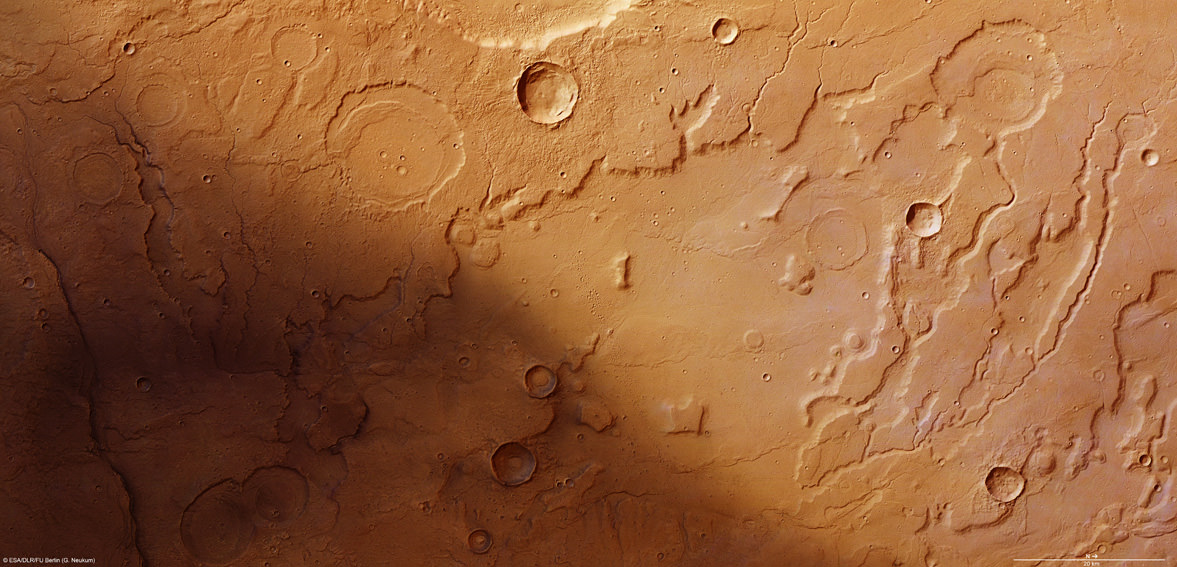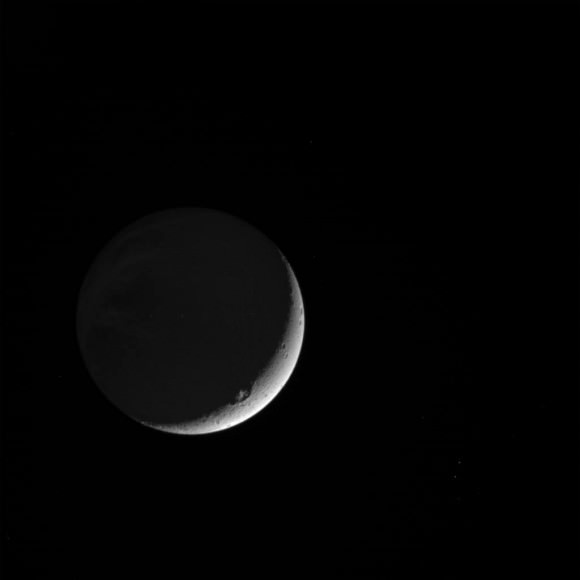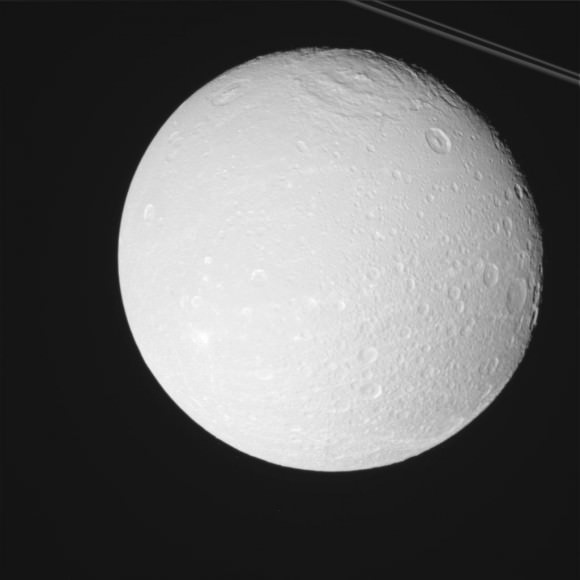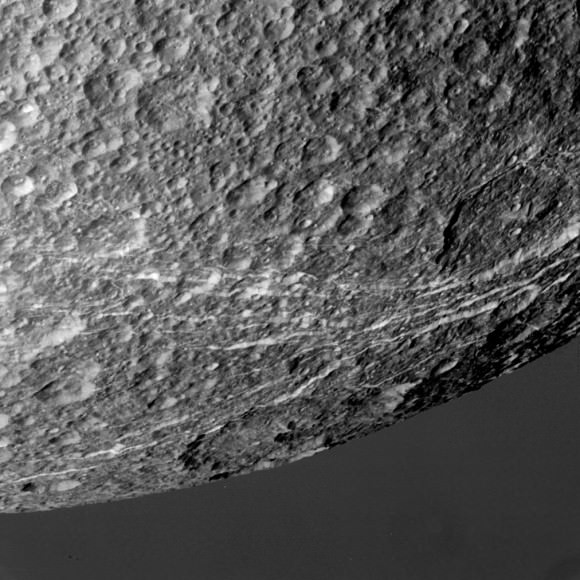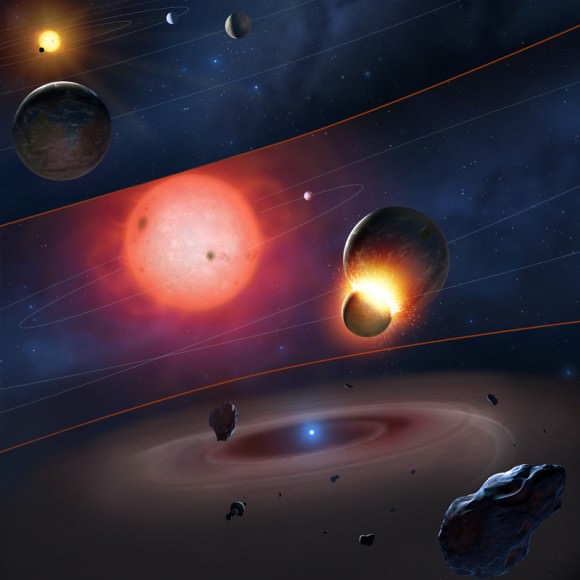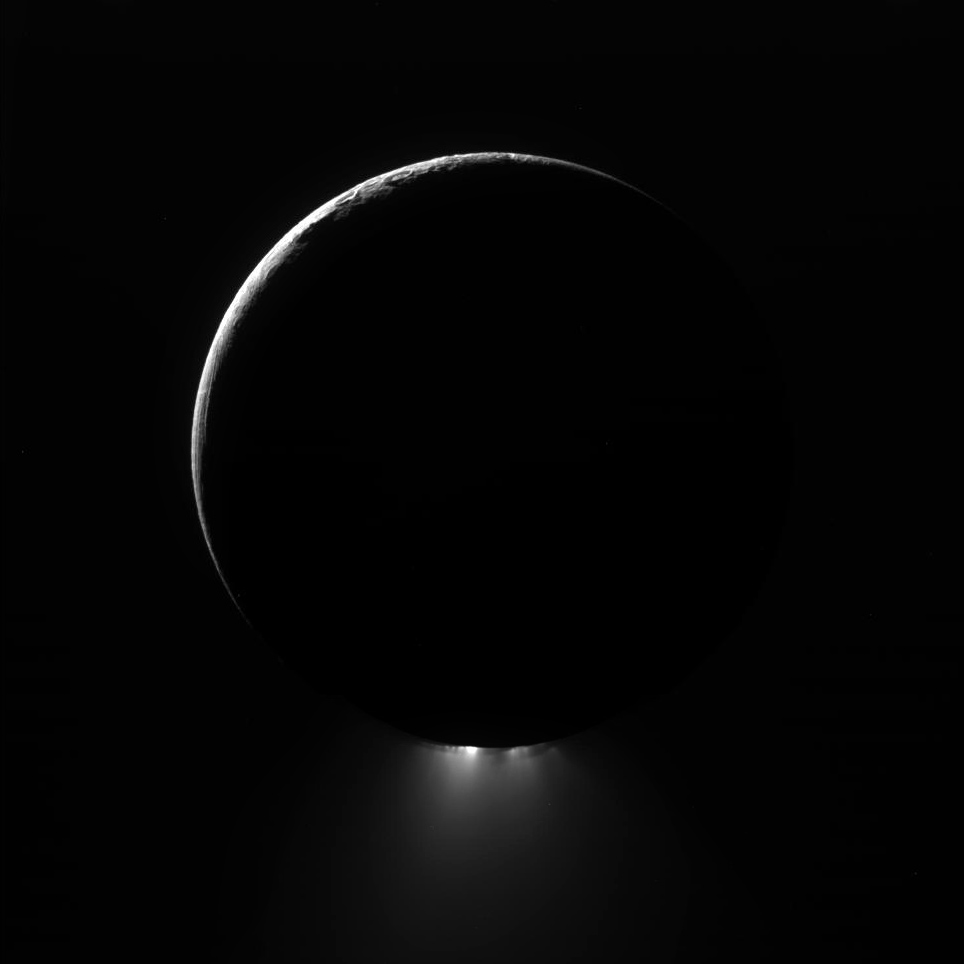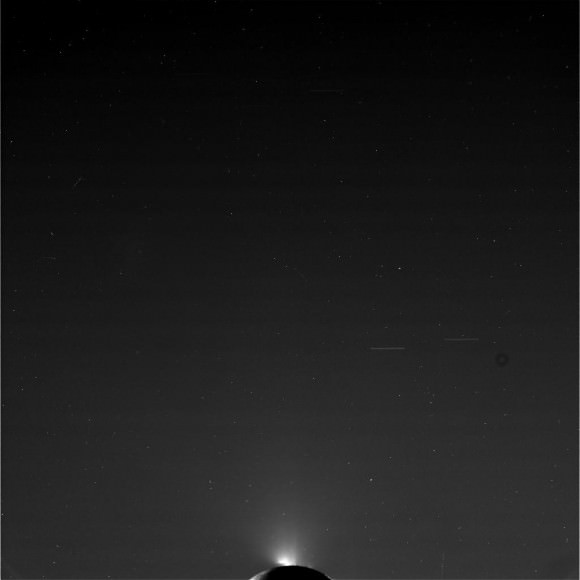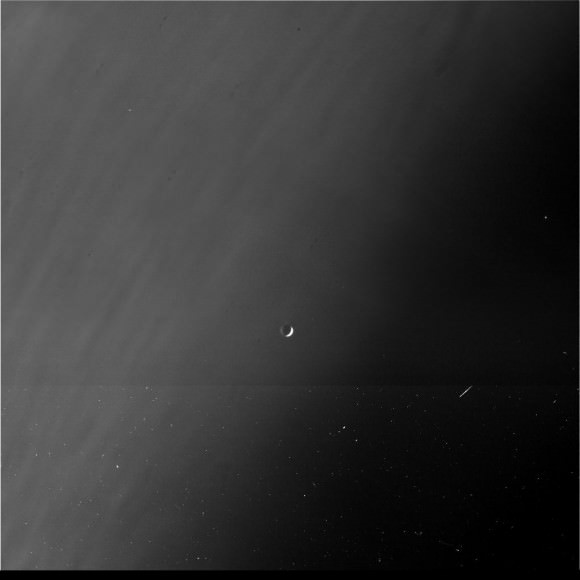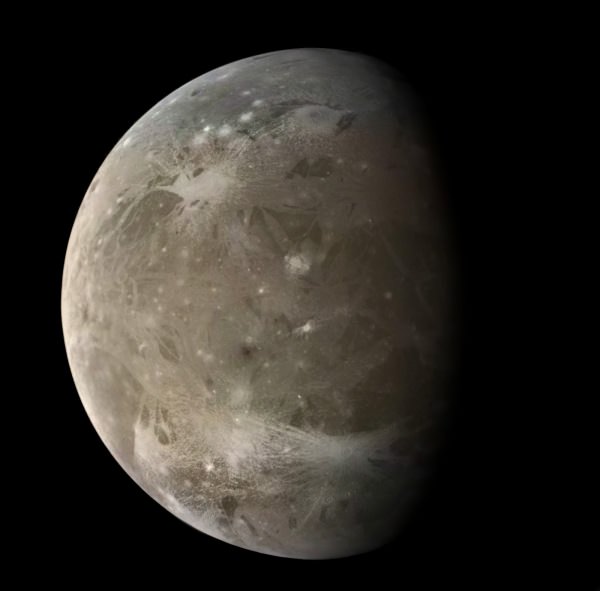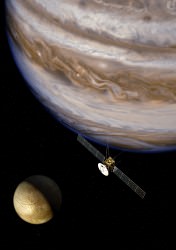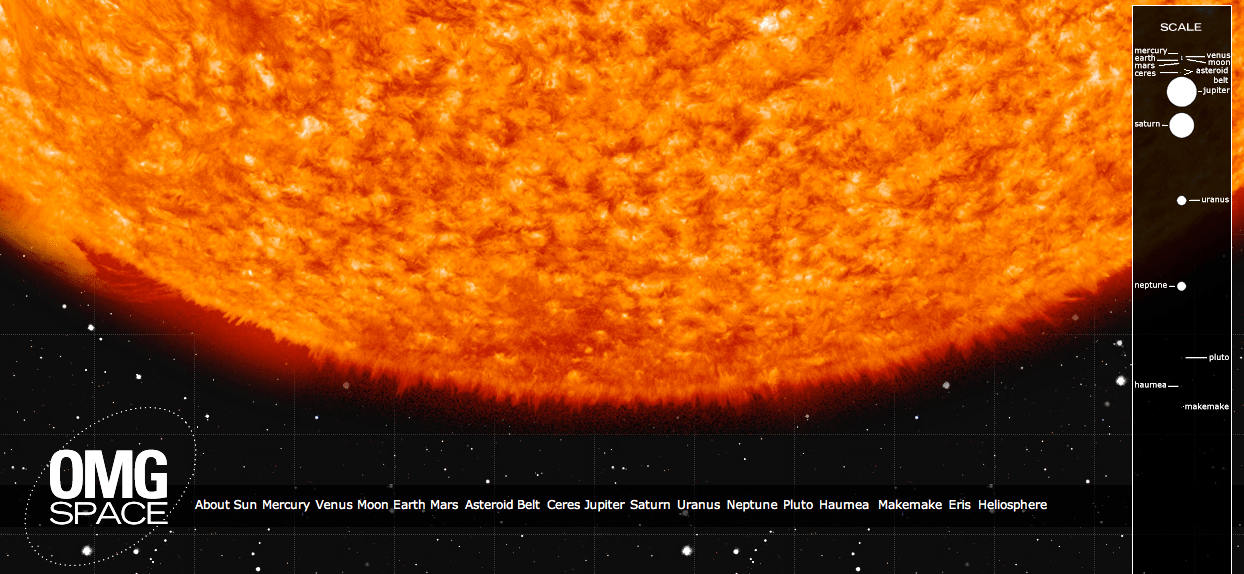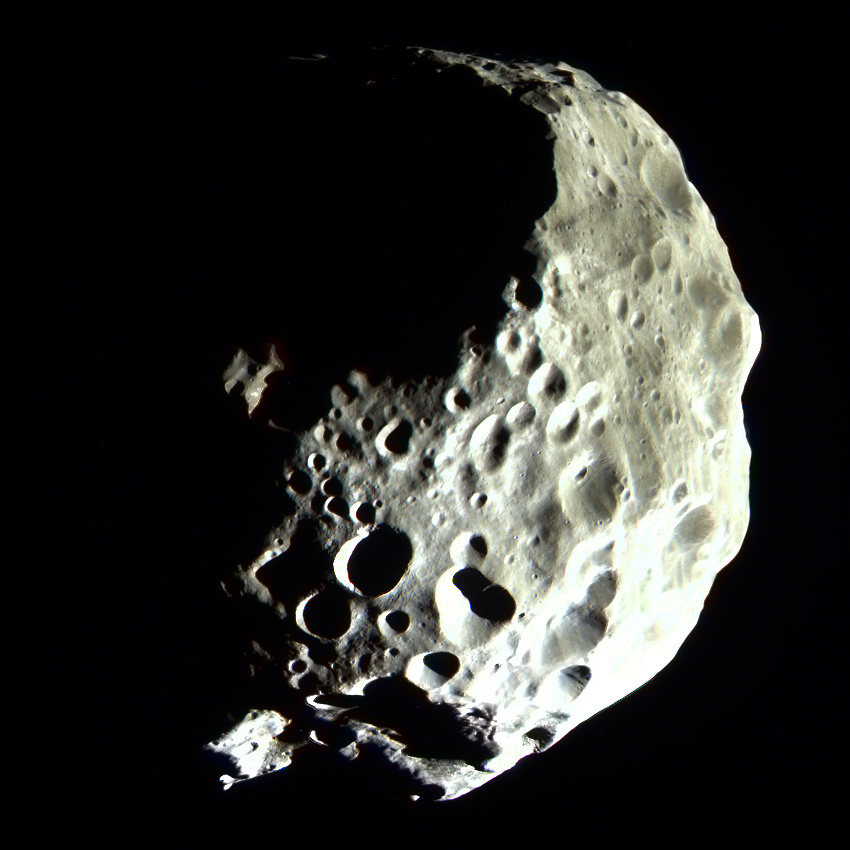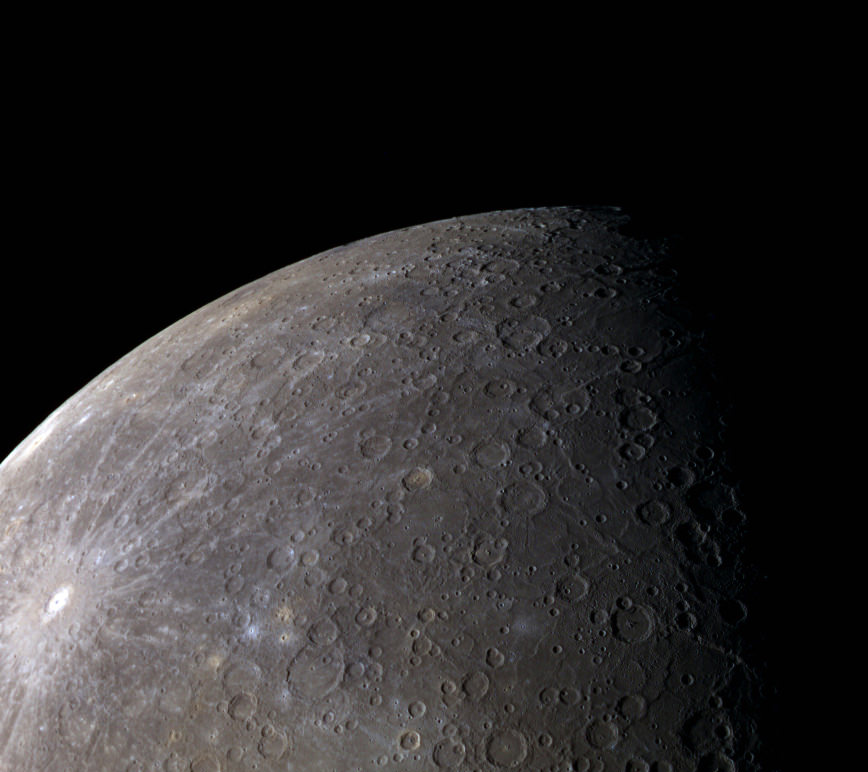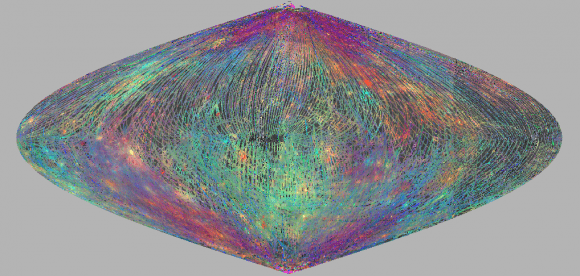Here’s a great shot of Titan and Saturn acquired by Cassini on May 6, 2012 just after a pass by the haze-covered moon. It’s a color-composite made from images taken in Cassini’s red, green and blue color channels, and the resulting image was color adjusted a bit to appear more “Saturny”.
UPDATE 7/2/12: The image above is featured in today’s Astronomy Picture of the Day (APOD)… check it out here.
Cassini also made some closer passes of Titan on May 6, taking images within about 710,000 km. After recent passes of Encealdus and Dione, Cassini buzzed past Titan in preparation of a targeted flyby on May 22, after which it will head up and out out of the “moonplane” in order to get a better view of Saturn’s rings and upper latitudes.
After that, Cassini won’t be playing amongst the moons again for three years, so images like this will be a rarity for a while.
Another image of Titan, closer-in and set against Saturn’s rings and clouds, shows the fine, transparent structure of the moon’s upper atmospheric haze layers:
Created by the breakdown of methane in Titan’s opaque atmosphere by UV radiation, the haze is composed of complex hydrocarbons that extend outwards up to ten times the thickness of Earth’s atmosphere!
(The RGB layers weren’t available for this particular view, so there’s no color version of it.)
Check out previous images from Cassini’s flyby of Dione and Enceladus, and follow along with the Cassini mission on the JPL site here.
Top image: Color-composite image of Titan and Saturn (NASA/JPL/SSI/J. Major) Bottom image: Titan in blue wavelength against Saturn (NASA/JPL/SSI)



